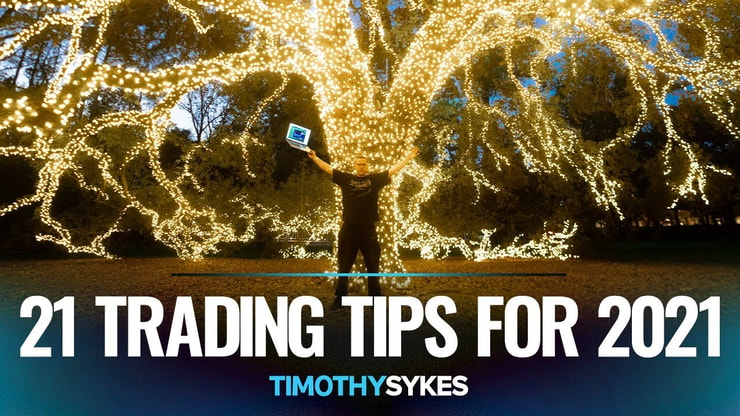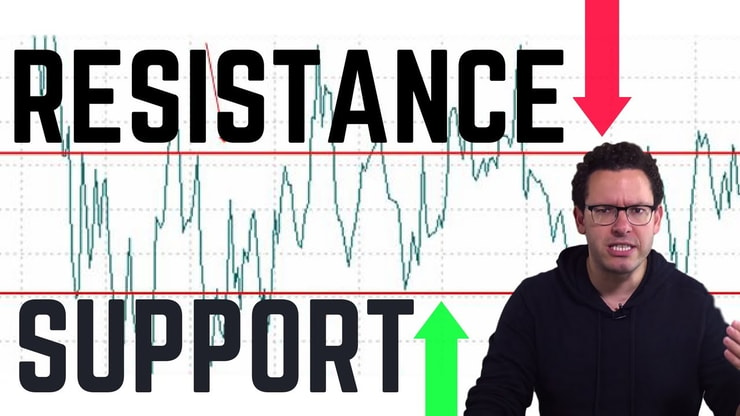Looking for a longer-term strategy, like position trading?
In position trading, you hold a security longer than a day but use many of the same research techniques as with shorter-term trading.
This approach can be great for traders who love the markets and trading … but may not have the time to constantly monitor stocks.
Here, I’ll guide you through the ins and outs of position trading, including what it is, how to know if it’s right for you, and how to get started.
Table of Contents
- 1 What Is Position Trading?
- 2 Position Trading vs. Investing
- 3 Position Trading vs. Swing Trading
- 4 Position Trading vs. Day Trading
- 5 Risks With Position Trading
- 6 Is Position Trading for You?
- 7 3 Ways to Know if You Should Go for Long- or Short-Term Trades
- 8 Position Trading Strategies: Finding the Best Opportunities
- 9 Position Trading Tips
- 9.1 Pay Attention to Stock Market Trends
- 9.2 Minor Fluctuations Can Turn Into a Full Trend Reversal
- 9.3 Think Long Term
- 9.4 Analyze the Company’s Quarterly Reports
- 9.5 Specialize in One or More Stock Market Sectors
- 9.6 Set a Smart Stop Loss and Don’t Get Stopped Out Prematurely
- 9.7 Set a Trailing Stop Loss and Ride Big Trends
- 9.8 Master Your Skills With Seasoned Mentors
- 10 Bonus Tip: 2 Top Position Trading Books
- 11 The Bottom Line
What Is Position Trading?
Position trading is a long-term approach to trading. Rather than ‘ready, set, go,’ it’s more like ‘ready, set … stay a while.’
Day traders look for stocks with the potential for big moves in a single day. Investors like stocks based on their longer-term potential. Position traders are somewhere in between, focusing on trends.
There’s no set timeline for position trading — you might hold a stock for weeks, months, or even years. That could mean more fundamental analysis than goes into day trading.
Plan to do plenty of research with this strategy. You’ll need to sift through press releases and earnings reports and analyze charts before making decisions about which stocks to trade.
Rather than looking at a stock’s short-term action, as a position trader, you’ll rely more on data like weekly and monthly charts. You want to identify longer-term trends rather than quick ways to potentially profit off of brief market fluctuations.
Think of position trading this way: it’s essentially the last level of trading before you’d call it long-term investing. And your position can be long term, but it doesn’t have to be.
Why Traders Might Choose Position Trading as a Strategy
If you want to trade, it’s important to figure out what type of trading best suits you.
Here are some important things to consider:
- Your account size
- How much time you can devote to trading
- Your trading goals
- And, of course, your risk tolerance
Your trading experience also matters.
So why would traders be drawn to position trading?
For one, it’s fairly accessible to newer traders. The pace isn’t as frantic as day trading or swing trading. You can potentially have more time to plot your course of action and create trading plans.
Position trading can also be less demanding on a day-to-day basis. You don’t have to be as obsessive about watching charts daily and hourly. But you do have to check it regularly to make sure it’s performing as you expect.
On a broader level, position trading can be more appealing in different types of markets…
For example: A bull market with strong emerging trends can be a good time for position trading as stocks slowly trend up.
But in a bear market, day trading might be more advantageous.
It’s really up to you, your go-to strategy, and what you find works best as you navigate the ever-changing markets.
The Difference Between a Long-Term and Short-Term Position
As a position trader, you’re looking for stocks that you can stick with for a while in hopes of profiting off of a longer-term trend.
Research is crucial. And so is a deliberate approach to picking out stocks. Find a sector and strong candidates, then use technical and fundamental analysis to zero in from there.
Dig deep to understand the company — its earnings reports, history, and more. You’re trying to see if it can last.
Position trading can seem like the opposite of day trading. The holds are far longer, and you’re looking for sustainable trends rather than rapid spikes.
But the two styles are actually more similar than they might seem. While the goals and duration may differ, patterns and research are still critical. In both short-term trading and position trading, you’re looking for patterns and trends.
The difference is that in position trading you’re looking for a sustainable long-term trend, and in shorter-term trading, you’re looking to ride the momentum of fast spikes and dips.
For example, you might day trade the same stock multiple times. But it’s less likely you’d do that with position trading.
Position Trading vs. Investing

Position trading doesn’t involve holding a stock as long as investing.
Investors hold stocks long term, and by long-term I mean usually forever. They do a lot of fundamental research into the company’s financials, growth potential, products, and management.
Investing is usually done in large-cap stocks like blue chips. They might also look for companies that pay dividends so they can reinvest the money back into more stock.
Position Trading vs. Swing Trading

Position trading means you’re holding stocks for a longer period of time vs. swing trading. With swing trading, you only hold a stock for a day or two, or maybe up to a week.
Swing trading is more about catching quick short-term trends. Position trading is looking at the market from a bigger-picture perspective and taking advantage of longer-term trends that may last a few months.
Position Trading vs. Day Trading
Day trading is fast-paced and requires constant attention and focus. With position trading, you can get in a position and check in on it periodically.
When you day trade, you’re opening and closing a position within the same day, sometimes within minutes. It also comes with other rules and regulations, like the pattern day trader rule (PDT). Position trading doesn’t require a minimum amount of funds to trade with.
Risks With Position Trading

Every type of investing or trading in the markets is risky. I try to reduce my risk exposure by day trading quickly. I’m in and out of positions within a few minutes and I always cut losses quickly if a stock goes against me.
With position trading, your capital is exposed to the ups and downs of the market. It’s up to each individual to determine when a dip goes too far and it’s time to get out. And these traders need to be able to tell if it’s just a minor correction, in which case they’d hold for the overall trend.
Sounds simple? Never underestimate the power of emotions when it comes to the markets and your money.
Is Position Trading for You?
Position trading could be a good option for someone entering the market for the first time. As long as you do your research, due diligence, and can recognize patterns and trends, you can test the market with a small position.
It can also be a good option for someone who wants to enter the market but has limited time due to a 9-to-5 job. Or someone who likes the idea of investing but wants to be more involved with the management of their money and positions.
3 Ways to Know if You Should Go for Long- or Short-Term Trades

Here are some key questions to help you decide which approach is right for you…
More Breaking News
- BigBear.ai’s Journey in the Stock Market: Rising Trends and Challenges
- Top Bitcoin Stocks to Watch Under “Crypto Emperor Trump”
What’s Your Timeline?
Every trader’s different. There’s no set timeline for finding your stride. But you need to know your goals as a trader?
If you’re looking for potentially quicker results, position trading may not be right for you.
I like short-term trades in penny stocks. It’s the niche I’ve been trading for 20+ years and teaching for 10+ years. Every year, I start trading with the amount I started with — $12,415 — to show my Trading Challenge students how to trade with a small account.
Plenty of my students take the knowledge they learn in my Trading Challenge and apply it to their own strategies, like position trading. A longer-term strategy can be a great way to take advantage of the patterns and knowledge you learn from short-term strategies.
How Technical Are You?
With position trading, you want to identify trends and stocks with long-term potential.
You have to find stocks that are built to last. This requires a lot of technical analysis.
So as a position trader, you’ll be looking at longer-term analysis, including 200-day moving averages. Contrast that to the 10-day or even hourly averages that shorter-term traders use.
You’ll still research to find your entry and exit points and stop-loss levels. It’s all about your trading plan and finding support for every single trade.
What Kind of Market Action Are You Looking For?
This strategy has a slower approach. So you need the patience to monitor a stock’s progress over days, weeks, and even months without panicking over little price swings.
If you crave more action, swing trading or day trading might be better suited to your style. These strategies are more about fast market action, shorter trends, and more immediate fluctuations.
Now, here are three things every trader should consider for every single trade…
#1: A Planned Entry
Planned trade entries are important. You need to feel confident that the trend will continue on an upward trajectory. You should feel good about trading the stock.
One method of entry for position trading is to wait until the price crosses a milestone, such as breaking the 200-day moving average. But do your research and find what works for you.
#2: A Planned Exit
Don’t forget to consider your exit. Before you enter the trade, have an idea of when the trend begins to reverse so you can get out of your position.
For example, one popular method of exiting a long-term position is to wait until the price closes below the 200-day moving average. You could also use candlestick reversal patterns to determine when a trend might be reversing.
#3: Controlled Risk
Position traders probably won’t experience the same massive spikes and drops as day traders, but it’s still important to look at price fluctuations.
One of the hardest things to balance with position trading is the patience to endure fluctuations in a stock’s price.
You also have to be able to identify when stocks are passing price dips and when you’re looking at a trend reversal. That’s not always easy to do.
That’s why many position traders use orders like stop losses or trailing stops to help protect their accounts.
Position Trading Strategies: Finding the Best Opportunities

Ready to learn even more? Here are some common strategies for finding stocks to trade in this longer-term approach…
Analysis
Fundamental and technical analysis are essential for position trading. It’s how you figure out if a stock has the potential to live up to your trade expectations.
Here are some of the key things to look for as part of your analysis…
Support and Resistance
Support and resistance are important for any type of trading, including position trading.
It can help you plan your entries and exits. In short:
- Support is the point at which the price of a stock stops falling.
- Resistance is where the price of a stock stops rising.
On a stock’s chart, you can monitor when a stock’s breaking support and resistance. These points are highlighted with trendlines. Depending on how the trendlines move, you can determine the trend’s the highs and lows. That’s where many traders choose entries and exits.
This video details more of the basics on support and resistance and how to use them in your research.
Short-Term Position Trading
Can position trading ever be short term? You bet your loss-cutting bottom dollar.
It’s less about the duration of time you hold and all about the duration of a trend.
Position trading has a reputation for being long term because trends can sustain for weeks or months. That doesn’t mean it’s set in stone.
Position trading may have a long approach, but as a trader, you have to be willing to cut losses quickly. If the trend’s reversing, don’t hold and hope. Cut your loss and move on.
Forex Position
How can the foreign exchange (forex) market play into position trading? In a few ways.
For one, looking at the foreign market can give you a more global view of the market at large. One example is seeing how big policy changes or events can affect currency and global trends. This can spell out big movements in the markets.
Since the markets are intertwined, foreign developments can affect the U.S. market. So even if you’re not trading internationally, you can still look at the forex markets as part of your research for position trading in the U.S.
You can read more about the forex market in this post.
Breakout of a Long-Term Range
The first rule of Fight Club — I mean the stock market — is that the stock market’s always changing.
Sometimes we’re in a range market, where prices bounce between lows and highs. Other times, we’re in a trending market, where prices either ascend or descend more steadily.
When in a range market, eventually there will be a break. This is something that can potentially work to your advantage as a position trader.
In a range market, a lot of traders tend to go long on support and short on resistance. They’ll likely put their stop-loss below support and above resistance. After a while, it becomes a kind of stop-loss twine ball that only increases in size as more traders get in on the action.
Then, eventually, the market will experience a breakout. That’s when position traders will buy in, and the breakout will act as the catalyst for a big new trend.
The First Pullback
A pullback is when a stock’s price briefly moves against the trend before reverting back to the trend trajectory. This is another important thing for position traders to look at — particularly the first pullback following a breakout.
Say that after a breakout, you notice a trend. If you didn’t get in right away, you want to keep your eye on the prize: the pullback. This is when you can possibly gain a good entry to your trade.
Position Trading Tips

Keep these tips in mind to further refine your position trading…
Pay Attention to Stock Market Trends
Trends are the bread and butter of position trading. So if this will be your go-to strategy, you need to become obsessive about identifying trends.
Look at the market. Read the financial pages and analyst reports. Keep up with world news. Follow foreign markets.
And through it all, keep track of trends in your trading journal. This will help you monitor them more effectively.
Minor Fluctuations Can Turn Into a Full Trend Reversal
Who remembers Crystal Pepsi? Trends can be fickle. Sometimes they can continue for years, and sometimes they’re a flash in the pan.
As soon as you start to see minor fluctuations in your stock’s price, be cautious.
It could be a minor fluctuation … Or it could be that tiny leak before the whole dam bursts.
Price fluctuations could turn into a full trend reversal and lead to big losses.
Think Long Term
This might sound painfully obvious, but it’s worth noting: With position trading, you have to be willing to commit to your trade.
Say you’ve identified a trend and you’re ready to take action. From this point on, it’s almost like having a new plant. You might not need to actively care for it 24/7, but you’ll have to water it on occasion.
You’ll have to monitor this stock’s progress over time and stay on top of fluctuations so you can watch any descents that lead to losses.
Analyze the Company’s Quarterly Reports
With position trading, it’s not just good enough to identify a trend and buy a company’s stock. You must strongly consider the company itself since you might be sticking with this stock for a while.
This is where the quarterly earnings report can come into play. It includes information like net income, net sales, earnings from operations, and the EPS (earnings per share). It’s a great resource that can tell you a lot about a company’s health.
It can also tell you about potential trends. Is the company meeting earnings forecasts or exceeding them? This could be more proof in the pudding to support the trend (and stock) gaining momentum.
Specialize in One or More Stock Market Sectors
If you’re just looking around the stock market for potential trends, you’ll probably get overwhelmed fast…
Don’t make things harder on yourself than they have to be. To start off right in position trading, begin to narrow your choices by settling on a sector.
It might be healthcare, energy, technology … or something else. By first focusing on a sector or two, you can begin to follow the news and trends there, which will make it easier to identify front-runner stocks to trade.
Set a Smart Stop Loss and Don’t Get Stopped Out Prematurely
A stop-loss order (aka stop order) is an order type where you buy or sell a stock when it reaches a specific price — the stop price. Once the stock reaches that price, the stop order is filled as a market order.
Because a position trader may not be monitoring stocks as immediately and closely as, say, a swing trader, it can be helpful to place a stop loss so that the stock doesn’t tank without you knowing it.
However, you want to be careful about your stop loss. You don’t want a temporary dip to shut you out of potential profits.
Where you place your stop loss depends on various factors, including the market’s volatility and the stock’s past performance.
Be sure to check out this post for more information and tips on how to set a stop loss.
Set a Trailing Stop Loss and Ride Big Trends
A trailing stop is a type of stop order that you can set within a percentage range of the stock’s current market price. It has a little more wiggle room and flexibility than a stop-loss order.
Unlike stop-loss orders, trailing stops don’t have to be manually reset. They also potentially allow you a little room to ride the waves of the trend a bit easier.
Master Your Skills With Seasoned Mentors
There’s more than one way to forge a successful trading career. However, regardless of whether you want to take a longer or shorter approach to your trades, you need to learn and understand certain market basics before you start trading.
If you don’t take the time to build up your trading skills, you’ll likely lose a lot of cash while you learn things the hard way in the market.
A trading education can help bring you up to speed so that you can start your trading career with greater know-how and confidence.
Trading Challenge
I created my Trading Challenge so you don’t have to learn things the hard way. It’s the resource I wish I’d had when I was first starting out as a trader!
My Challenge is designed to offer a working education, meaning it takes hard work to build your trading skills. I teach students the process and mindset it takes to become a successful trader.
If you’re accepted you’ll get access to all my DVDs, my Challenge chat room, my video lessons, and my weekly live trading and Q&A webinars.
Are you up to the Challenge? Apply today — and find out if you make the cut.
Bonus Tip: 2 Top Position Trading Books
“Position Trading: Market Timing Mastery: Trade like a Hedge Fund Manager by Discovering How to Spot Trends and Knowing Exactly When to Buy & Sell Your Stocks for Maximum Profit” by Alpha Bull Traders
In “Position Trading: Market Timing Mastery,” the authors share how they believe you can make it in the markets by only making a few trades per year.
“Fundamental Analysis and Position Trading: Evolution of a Trader” by Thomas N. Bulkowski
“Fundamental Analysis and Position Trading: Evolution of a Trader” gives readers an overview of the four main trading styles. This can be a big help in understanding the different approaches to the market and what may best suit your needs and goals.
(As an Amazon Associate, we earn from qualifying purchases.)
The Bottom Line

Every trader has different preferences for trading styles. It’s important to find the one that works for you.
I like to day trade since I trade the sketchiest stocks in the market. You might like to try higher-priced stocks and hold them to take advantage of longer-term trends. It’s totally up to you.
A lot of my students take my lessons and patterns and make them their own. Trading isn’t an exact science — it’s very personal.
Some people like penny stocks, some like higher-priced stocks. Some traders love OTC stocks while others only trade listed stocks.

The lessons that don’t change are all about having a strategy, a trading plan, rules, and discipline.
Bottom line: No matter your trading style, you have to be willing to put in the work. If you’re ready for my tough-love approach to teaching, apply for my Trading Challenge today.
Have you tried position trading? Let me know in the comments!








Leave a reply